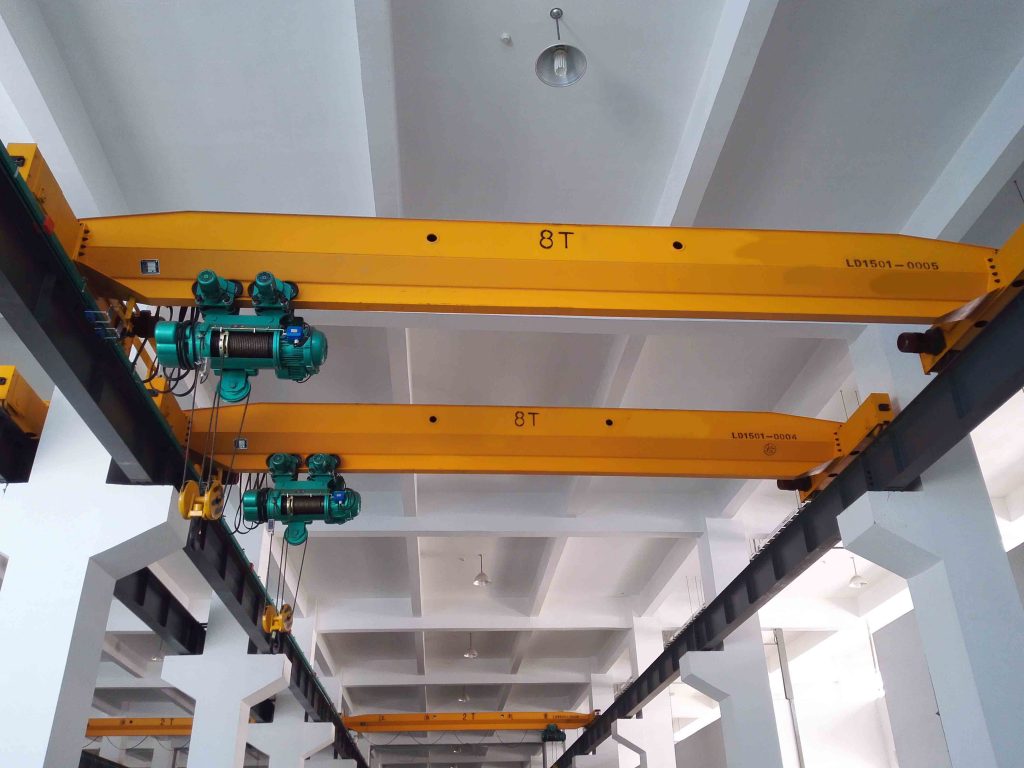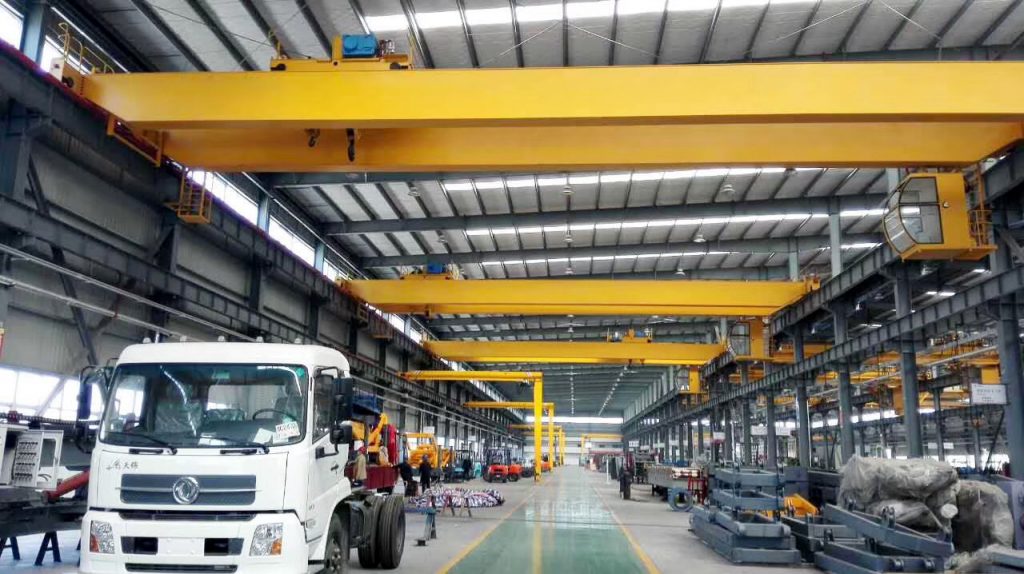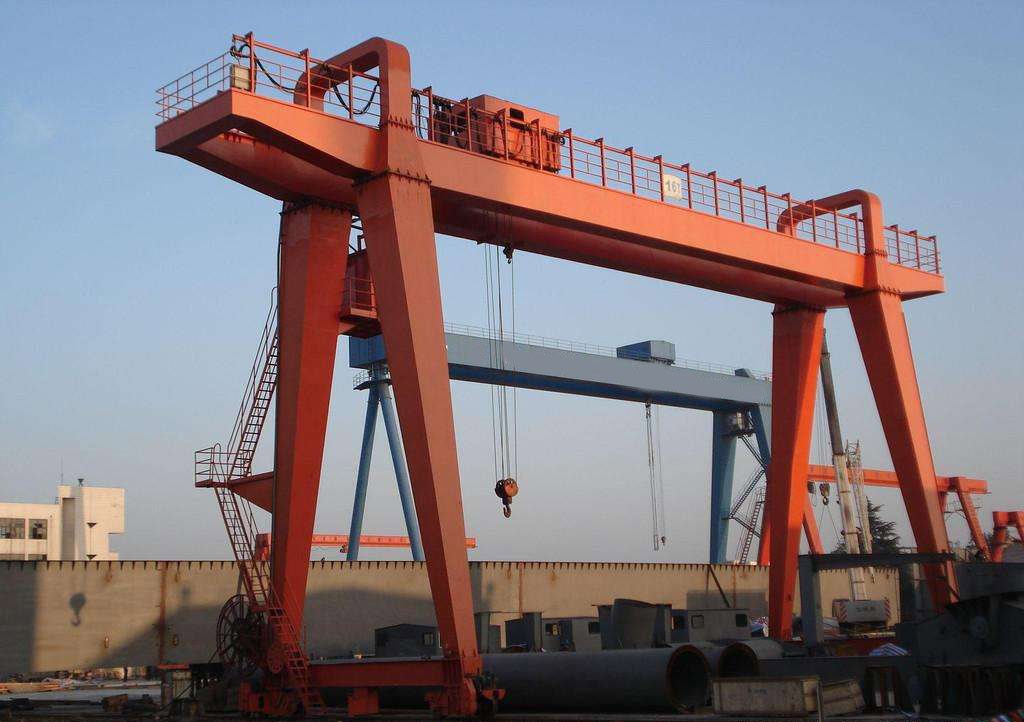Moving of heavy and large loads within a facility can be cumbersome and hence the use of an overhead crane can relieve you the work of doing so. Overhead cranes are machines that have been designed to move a load of a specific capacity in a specific direction assisting in the movement of the load.
Using an overhead crane in a facility is very safe and efficient as it reduces the overall working time compared to using manpower in doing the job.

Overhead cranes are used in different areas that include
- Aiding in the transportation of materials from a storage area to where they are required.
- Moving of heavy and huge materials within a warehouse.
- Loading of final products from the assembly point into a truck.
- Moving different types of materials and products in the production process.
- Unloading different materials from a truck.
- In manufacturing industries( industrias manufactureras ) to load raw materials into the machines.
- Moving of containers in a shipping facility.
Components
- Hook: this is a device that is used to hold the load allowing for lifting of the load.
- Hoist: it consists of a powered motor and a rope that is used to lift the load.
- Trolley: the hoist is mounted unto the trolley thus giving the hoist support. The trolley can either be under-running where the trolley wheels on the bottom flange of the crane beam or it can be a top-running where the wheels run on rails fitted on the top part of the crane beam.
- Bridge: this is the structural component of an overhead crane and consists of one or more load bearing beams that span the width of the building.
- Runway: this is the support system on which the crane operates.
- Runway rails( rieles de pista ): it is supported by the runway beams for the crane to travel on.
- End trucks: they house the wheels used by the crane to travel.
- Bumper: this is a device that will absorb energy once the crane has stopped moving thus reducing impact.
- Controls: they operate the relays and contactors mounted on the crane by use of push buttons and switches.

Different types
There are different types of overhead cranes and these are dependent on the loading capacity of the crane, size of the crane, shape of the crane, location of the crane and motion of the crane all that allows the identification of the proper crane for a specific purpose. These include;
1.Bridge crane
They operate on two overhead runways on the building and a bridge is used to move the crane on the runways while the hoist runs on either side of the bridge.
They can be either single girder or double girder depending on the number of beams making up the bridge.
2.Grant crane
They are similar to bridge cranes but they use legs that travel on the rails located on top or within the floor instead of moving on runways.
3.Jib crane
These are cranes that are mounted on columns or on building walls and can rotate at different degrees.
4.Monorail crane(grua monopuente)
These type of cranes use a trolley system to carry the hoist on a single direction enabling them to carry loads back and forth.
5.Workstation crane
They are designed to carry a light load in a smaller area of work.
Working process of an overhead crane
Using the controls on the crane, the switch button is turned on by an operator which in turn powers the electric motor of the hoist via electric wire ropes connected to the hoist by the trolley. The trolley then moves horizontally along the bridge positioning the hoist and hook to pick up the load. The hook is then attached to the load and the hoist, using a rope will lift the load. The bridge will move the hoist which travels on the runway containing rails to a specific direction. Once it has reached the destination, the bumpers that are attached to the bridge, trolley or runway will stop the crane from moving. The trolley will then position the hoist and hook to lower the load.
Parameters to consider when using overhead cranes
•Overhead crane capacity
This refers to the weight in tons that a crane can carry. Different cranes are designed to carry different amounts of weight.
•Lifting height
This refers to the distance between the hook and the ground.
•Working speed
This refers to the speed at which the crane is working in lifting the load.

Distinguishing features
- The hoist system travels on a bridge.
- These type of cranes move on parallel runways.
- They can carry hot loads and thus are safer.
Advantages of using cranes for lifting purposes
- They are safe because they are designed to work in a specific area.
- Overhead cranes are flexible since they can operate on different surfaces.
- They are cheap since they do not require a lot of labour to operate. Get a low price but high quality crane from Aicrane(Aicrane Grua).
- They help in avoiding damage to the load since they move in a straight path.